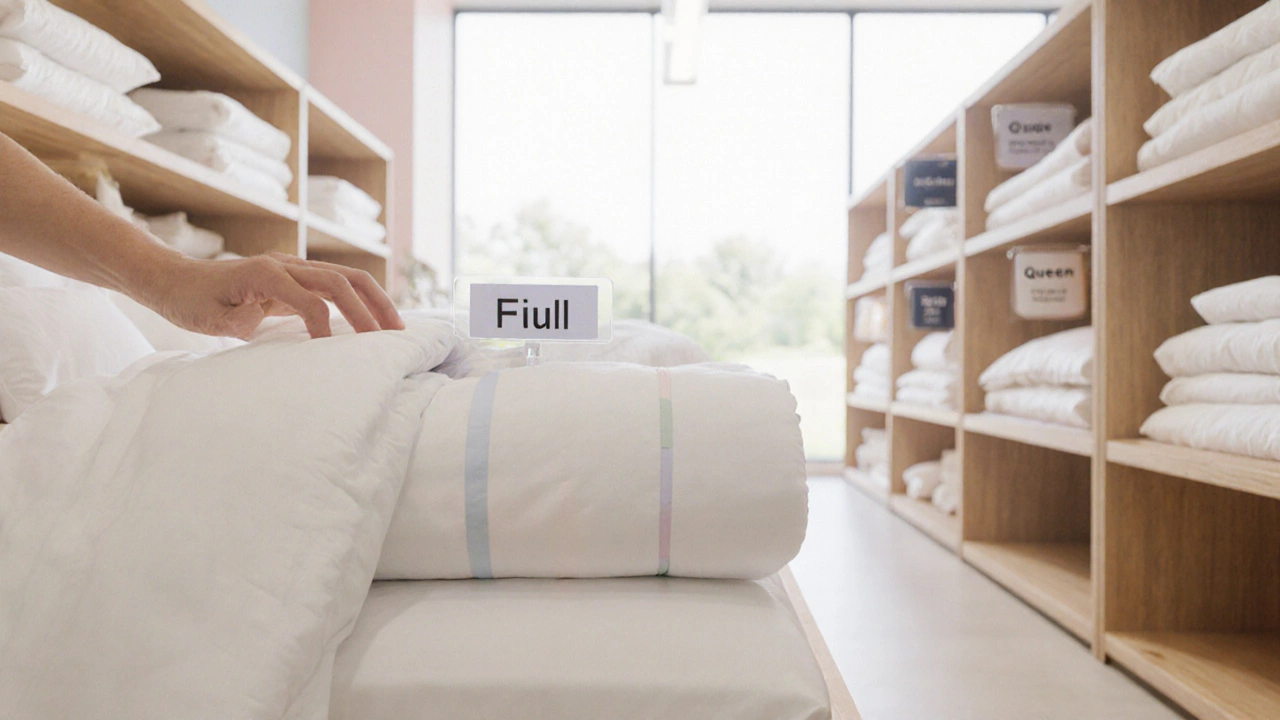When shopping for a full size comforter, a blanket-sized bedding layer designed to cover a standard double‑size mattress with an extra drop over the sides. Also called a queen‑size duvet, it sits on top of sheets and adds both warmth and style. The comforter is a core part of bedding, the collection of textiles that dress a bed, including sheets, pillowcases and blankets, and it ties directly into the look of your bedroom décor, the visual theme created by colours, patterns and accessories in a sleeping space. Understanding how a full size comforter works helps you pick the right material, fill and care routine for a cozy night.
First, size matters more than you think. A true full size comforter typically measures around 86‑88 inches wide by 96‑100 inches long, giving a 15‑20 inch drop on each side of a standard double mattress. If you have a deeper mattress or love a dramatic, hotel‑style look, you might want a comforter that’s 10‑12 inches longer. mismatched sizes lead to exposed sheets and an uneven appearance, which is exactly what most people try to avoid.
Next up, the fill. There are two main families: natural (down, duck feather, wool) and synthetic (polyester, microfiber, cotton blend). Down scores high on loft and breathability – it traps air without feeling heavy – but it can trigger allergies and needs regular fluffing. Feather adds weight and durability at a lower cost. Synthetic fills are hypoallergenic, often cheaper, and maintain warmth even when damp. If you live in a damp climate, a synthetic option might be the safer bet. Each fill type influences the comforter’s weight, warmth‑to‑weight ratio, and long‑term durability.
The outer shell is just as important as the fill. Cotton percale gives a crisp, cool feel, perfect for summer nights. Sateen cotton offers a silky sheen and a softer touch, ideal for colder months. Microfiber blends are super smooth and tend to resist wrinkles, while bamboo fabrics bring a natural moisture‑wicking property that suits sweaty sleepers. When you compare these options, think about the climate you live in, your skin sensitivities and the overall aesthetic you want – a matte cotton looks casual, a glossy sateen feels luxe.
Maintenance is another practical angle. Many synthetic comforters are machine‑washable at 40 °C, while natural down often requires professional cleaning or a gentle tumble‑dry with dryer balls to keep the loft. Look for a comforter with a removable cover – that way you can wash the outer fabric frequently without risking the fill. A double‑stitched seam or baffle box construction also helps keep the fill evenly distributed, which reduces clumping and extends the life of the piece.
Styling a full size comforter goes beyond function. Because it sits on top of the bed, its colour and pattern set the tone for the whole room. Neutral tones like ivory, grey or soft blue create a calm backdrop that lets artwork or throw pillows pop. If you love bold statements, a patterned comforter with geometric or floral prints can become the focal point, especially when paired with solid‑colour sheets. Adding a couple of decorative shams or a chunky knit throw on the foot of the bed instantly upgrades the look without a full redesign.
Don’t forget the role of accessories. A well‑chosen set of pillowcases, a plush mattress topper and a matching duvet cover turn a simple comforter into a coordinated ensemble. When the colours of these items echo the tones of your curtains, rugs or wall art, the room feels intentional and balanced. For renters, a duvet cover is a smart investment – you get the comfort of a high‑quality comforter while protecting it from spills and wear.
Finally, price isn’t everything, but it does signal quality. A budget synthetic comforter can be perfectly fine for occasional use, yet a mid‑range down comforter often offers better insulation and a longer lifespan. Compare the fill power (for down) or the fill‑to‑fabric weight ratio (for synthetics) to gauge warmth. The higher the ratio, the lighter and warmer the comforter will be.
Armed with these basics – sizing, fill, fabric, care and styling – you’re ready to choose a full size comforter that fits your sleeping habits and décor vision. Below you’ll find a mix of articles that dig deeper into bedroom makeovers, textile durability, and practical buying tips, giving you a well‑rounded view of how the right comforter can transform a bedroom from plain to inviting.

Learn what full-size bedding means, its exact dimensions, core components, fabric tips, and how to pick the right set for your bedroom.
